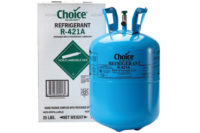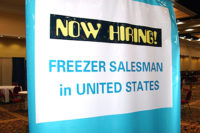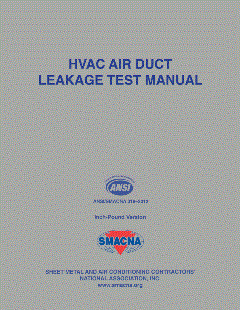One thing The Rush's president/ceo Larry Gurney didn’t want was a rush of air from the hvac system. So, planners decided not to try to keep the existing metal ductwork in the former Service Merchandise store in the Knoxville Shopping Center. As part of the $1.5 million retrofit Gurney chose fabric air dispersion systems to distribute even, draft-free airflow onto members.
New rooftop hvac systems totaling 49,000 cfm incorporated approximately 25% outdoor air into the reconfigured airflow design as specified by Engineering Services Group, the project's consulting engineering firm.
Using outside air combined with even air distribution is critical in eliminating stagnant perspiration odors associated with health clubs, planners said. The linear diffusers sewn into the entire length of the Comfort-Flow™ fabric duct manufactured by DuctSox®, Dubuque, IA, produce draftless airflow versus the staggered placements of metal duct registers.
The diffusers supply 90% of the airflow and the remaining 10% flows through the permeability designed into the fabric's texture.
"Indoor air quality (IAQ) is as important as the visual presentation when providing a pleasant atmosphere for members to work out," said Gurney. He co-founded The Rush last year after leaving his position as southwest division president of Pleasanton, CA-based 24-Hour Fitness.
But there's more to the hvac system than just IAQ. The 750-linear-feet of fabric duct ranging from 12- to 24-in. diameter adds to the new club's "exertainment," an industry buzzword used as one of The Rush's marketing strategies. DuctSox’s Sedona fabric, which uses the Comfort-Flow model, is an aesthetic factor in the design of project architect, said Daryl Johnson, Johnson Architecture, Knoxville.
Johnson also included 20 television monitors, a juice bar, and other amenities in his design. Aesthetics is critical, according to Gurney, because The Rush taps into the trend of people choosing health clubs over nightclubs as places to "hang-out."
Aside from aesthetics and IAQ, The Rush also cut retrofit costs by choosing fabric duct. Michael Hamil, vice president, Cherokee Millwright, Maryville, TN, a combination commercial mechanical contractor/industrial millwright firm, estimated The Rush saved considerable installation labor and handling costs versus metal duct. He said fabric duct is 90% lighter, hangs from suspension cables, and arrives at the jobsite via UPS.
"In an exposed ceiling situation where someone wants to make a design statement, fabric duct appears to be a good alternative to metal duct," said Hamil, who's expecting to use fabric duct a second time in an upcoming project that includes a radio broadcast studio.
Material costs of using fabric duct were comparable to using single-walled spiral metal duct and less expensive than double-walled metal duct, according to manufacturer's representative, Scott Ryan, Greeley Associates, Knoxville, who introduced the project's engineers to DuctSox.
Cherokee also installed 12 Trane Voyager Series rooftop units, which are controlled by individual Trane thermostats.
Gurney plans to use fabric duct exclusively in the one-year-old firm's expansion plan, which includes four locations this year and four to six locations next year in several undisclosed East Coast market locations.
Because of DuctSox's factory silk screening program, Gurney plans to cut hvac costs in future locations by imprinting logos of vendors on fabric ducts and charging the advertising space on an annual fee basis.
Publication date: 06/03/2002






Report Abusive Comment